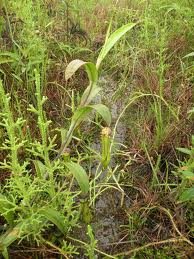Neomarica
Pot Cultivation
These plants may be grown in a greenhouse having a minimum winter temperature of 60 degrees or in a sunny window. A mixture of equal parts of loam and leaf mold with an addition of sand makes the best compost to use for these plants. Potting should be done in February or March. Plants that are in pots should be taken out and all the compost should be cleaned from the roots. They are then separated into several pieces; the strong, healthy pieces are kept for repotting and the rest are discarded. Plant three pieces to a 7- or 8-inch well-drained pot. Until new roots have formed, water carefully, after which the soil may be kept moist until autumn when it is gradually reduced; just enough is given to prevent the rhizomes from drying up. Established plants will benefit from liquid fertilizer being applied once in a while.Propagation
This is achieved by division at potting or planting time. |
N. gracilis |
VARIETIES
- N. caerulea;
- N. gracilis;




